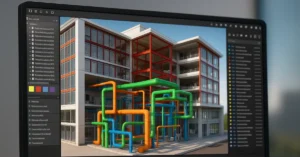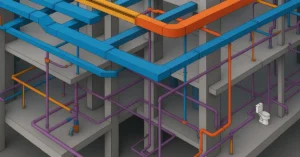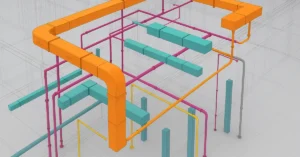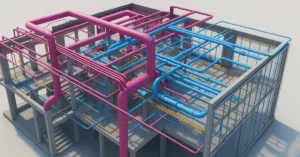Discover Brutalist buildings in Sofia
Brutalist buildings in Sofia are among the most overlooked yet fascinating architectural landmarks in Eastern Europe. Often overshadowed by the city’s older churches and neo-classical façades, these concrete monoliths tell a gripping story of ideology, ambition, and aesthetics. Emerging during Bulgaria’s socialist period, Sofia’s Brutalist architecture reflects a bold, uncompromising vision of urban planning and state power.
Today, these structures stand as both relics and revelations—reminders of a turbulent past and icons of a unique design language that continues to stir debate. In this blog, we uncover the most notable brutalist buildings in Sofia, exploring their history, significance, and evolving public perception.
What is Brutalism and How Did It Arrive in Sofia?
Brutalism emerged in post-war Europe as a response to the need for affordable, utilitarian buildings that could be constructed quickly and efficiently. The term originates from the French “béton brut,” meaning raw concrete, and the movement favored minimal ornamentation, stark geometric forms, and a raw honesty of materials.
In Sofia, as in other Eastern Bloc capitals, Brutalism arrived via the ideological pipeline of socialism. Bulgaria, under Communist rule from the mid-20th century until 1989, saw a wave of government-sponsored construction aimed at redefining the urban landscape. Brutalism offered a cost-effective way to build monumental government buildings, public housing, and cultural institutions. Sofia’s skyline quickly transformed with the addition of these gray giants, many of which still stand today.
Top Brutalist Buildings in Sofia
1. National Palace of Culture (NDK)
Location: Bulgaria Blvd, Sofia
Completed: 1981
The National Palace of Culture is perhaps the most iconic brutalist structure in Sofia. Built to commemorate Bulgaria’s 1300th anniversary, the NDK is a colossal multi-purpose conference and exhibition center. Its rigid symmetry, massive bulk, and concrete latticework exemplify socialist monumentalism. Inside, you’ll find vast halls, crystal chandeliers, and brutalist interior décor that echo the building’s exterior themes.
2. The Bulgarian Communist Party Headquarters (now National Assembly)
Location: Largo Complex, Sofia
Completed: 1950s (Brutalist renovations post-1960s)
Part of Sofia’s historic Largo complex, the former Communist Party HQ presents an imposing façade. While its lower sections reveal Stalinist classicism, renovations and interior changes reflect Brutalist influences, particularly in its concrete detailing and minimalist functionalism. It remains a powerful symbol of Bulgaria’s socialist past.
3. Hotel Rila
Location: Tsar Kaloyan St, Sofia
Completed: 1962
Hotel Rila combines early brutalist design with hospitality architecture. Once a prestigious socialist-era hotel, its repetitive vertical window arrays and rough concrete façade stand as a testament to mid-century modernism. Though modernized in recent years, its brutalist bones remain visible.
4. Ministry of Agriculture Building
Location: Hristo Botev Blvd, Sofia
Completed: 1970s
This towering gray slab is a prime example of bureaucratic brutalism—intimidating, cold, and relentlessly functional. Its concrete exoskeleton and window grid make it one of the most archetypal brutalist office blocks in Sofia. Though critics deride it as unattractive, its influence on Bulgarian institutional architecture is undeniable.
5. Technical University of Sofia (Main Building)
Location: Kliment Ohridski Blvd, Sofia
Completed: Late 1960s
The Technical University campus contains several brutalist buildings, with the main administrative building being the standout. Stark, modular, and visually austere, it reflects the Soviet influence on Bulgaria’s educational infrastructure. Students still walk its halls, surrounded by the clean lines and raw concrete walls characteristic of socialist-era academic buildings.
6. Universiada Hall
Location: Shipchenski Prohod Blvd, Sofia
Completed: 1961
Built for sports and large-scale events, Universiada Hall’s design emphasizes open space and structural strength. With its large glass curtain walls framed in concrete and minimalist interior, it serves as both a brutalist structure and a functioning sports arena to this day.
7. National Art Gallery’s Contemporary Art Wing
Location: 1 Knyaz Alexander I Square, Sofia
Completed: 1980s (original structure), renovated for contemporary use
This wing of the National Gallery houses contemporary Bulgarian art in a striking brutalist shell. While its exterior remains relatively simple, its concrete frame and bare interiors offer the perfect backdrop for modern exhibitions, harmonizing the raw architecture with creative content.
Public Reaction and Cultural Significance
Brutalist buildings in Sofia elicit mixed reactions. Older generations often associate them with political repression, shortages, and a grim aesthetic that dominated their formative years. Conversely, younger Bulgarians and foreign visitors increasingly see these buildings as cultural artifacts worth preserving.
Many brutalist structures were designed not just to serve functional purposes but also to impress—often through sheer scale and rigidity. These buildings embodied state power and ideological purity. Yet today, as architectural tastes evolve and nostalgia creeps in, there’s a growing movement to recognize and protect this part of Sofia’s heritage.
Preservation vs. Demolition: The Ongoing Debate
The fate of brutalist buildings in Sofia hangs in the balance. Post-socialist urban development has favored glass skyscrapers and Western-style malls, often at the expense of older buildings deemed outdated or ugly.
However, there are now grassroots campaigns to save key brutalist landmarks. Organizations and social media communities advocate for adaptive reuse rather than demolition. From converting brutalist offices into creative spaces to turning old cultural halls into museums, the city is slowly beginning to see the value in reimagining rather than erasing.
Why Sofia’s Brutalism Deserves More Recognition
Sofia’s brutalist buildings are not merely Soviet impositions. Many were designed by talented Bulgarian architects who brought creativity and subtle variation to a style often criticized for uniformity. These structures reflect a unique chapter in Bulgaria’s urban history and offer valuable insights into mid-century modernist experimentation within a socialist framework.
Furthermore, they challenge the way we define beauty in architecture. While polished stone and glass structures dominate contemporary skylines, brutalism’s unapologetic boldness offers a different kind of aesthetic value—one rooted in honesty, form, and historical narrative.
Brutalism as Inspiration for Modern Design
Globally, brutalism is undergoing a resurgence in appreciation, especially among designers, architects, and photographers. In Sofia, too, contemporary artists and architects are revisiting the brutalist past for inspiration.
From fashion editorials shot against concrete backdrops to design studios reinterpreting brutalist shapes in furniture and graphic design, the movement is proving far from dead. In fact, Sofia’s brutalist buildings provide a rich canvas for creative reinterpretation.
Conclusion
Brutalist buildings in Sofia are more than just remnants of a socialist era—they are bold architectural statements that continue to shape the city’s identity. From the sprawling National Palace of Culture to the functionalist halls of academia, these structures tell stories of a time when concrete was not just a material, but a message.
As Bulgaria continues to grow and modernize, there’s an urgent need to recognize the cultural and historical importance of its brutalist heritage. Whether admired or criticized, these buildings remain some of the most compelling features of Sofia’s urban landscape.
Exploring them offers not just a journey through architecture, but a deeper understanding of Bulgaria’s complex past and evolving future.
If you’re interested in learning more about architecture firms in Europe, check out this comprehensive list of the top 50 firms compiled by Archgyan. From innovative startups to long-established industry leaders, this list has it all. Take a look and discover some of the most inspiring and influential architecture firms in Europe today.
If you’re interested in architecture and want to learn more about this amazing field, subscribe to our podcast on youtube
For more SketchUp tutorials, head to https://www.sketchupguru.com










